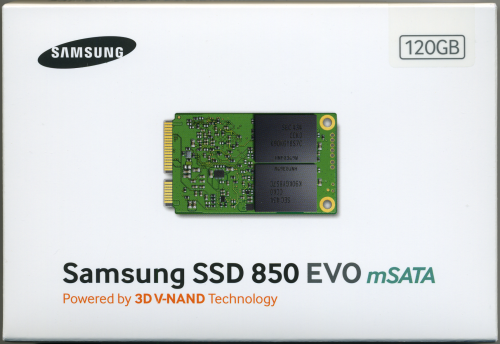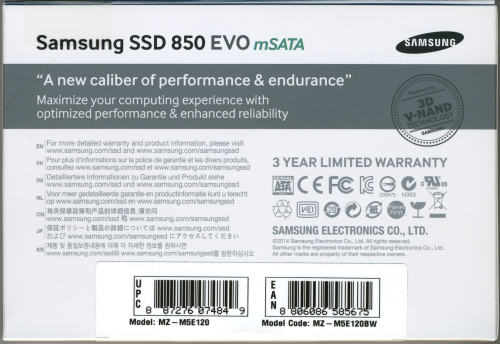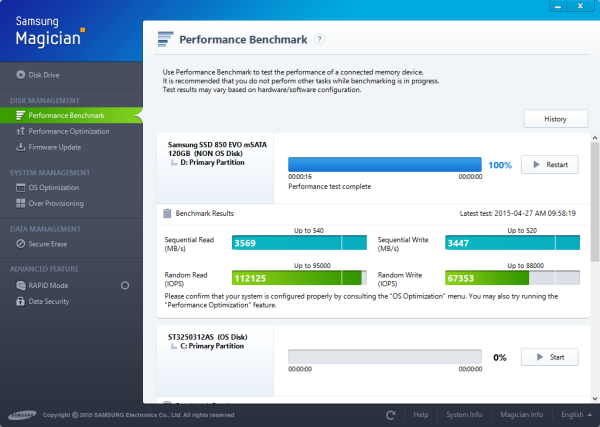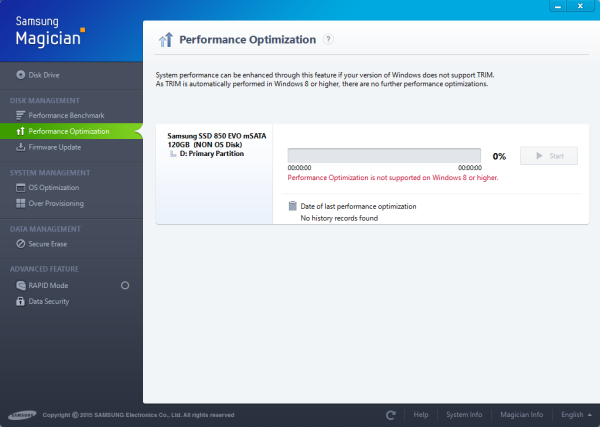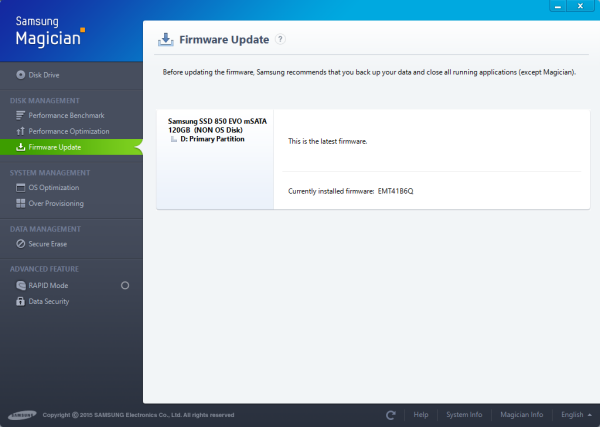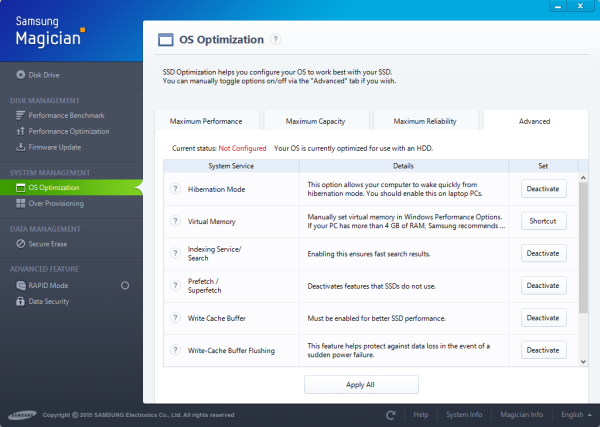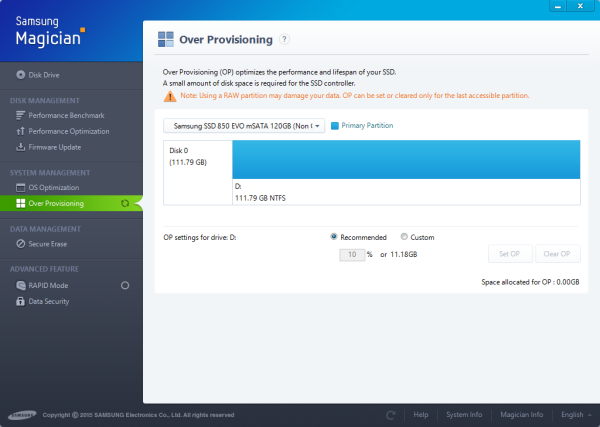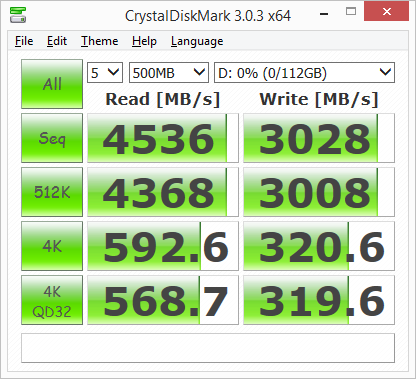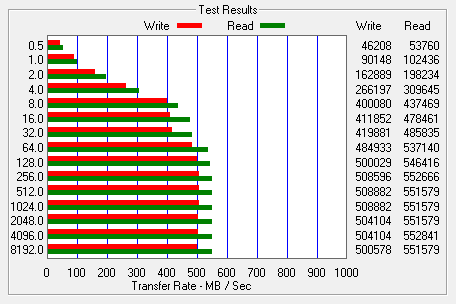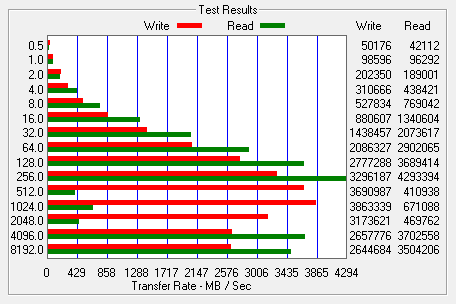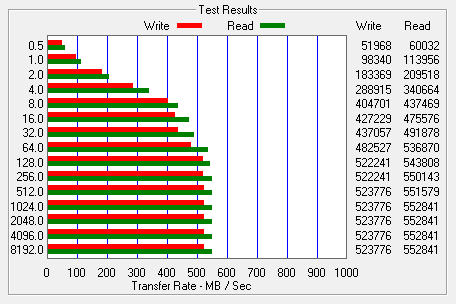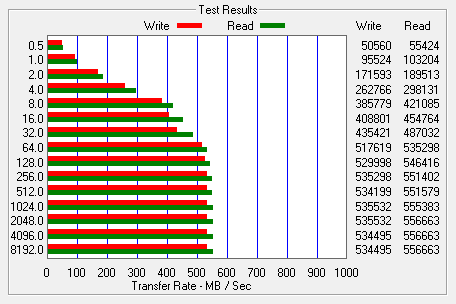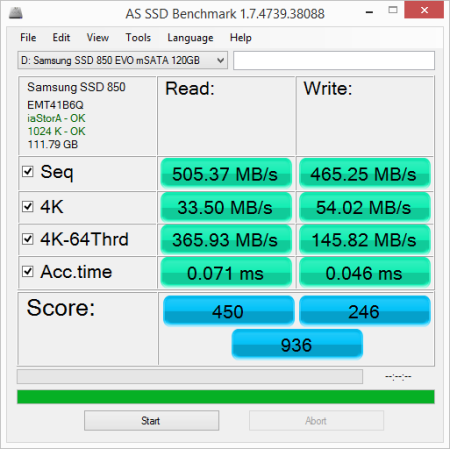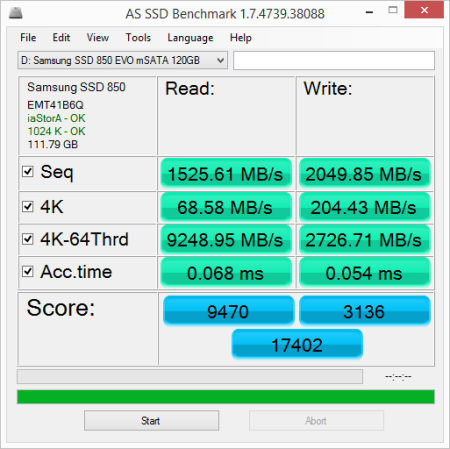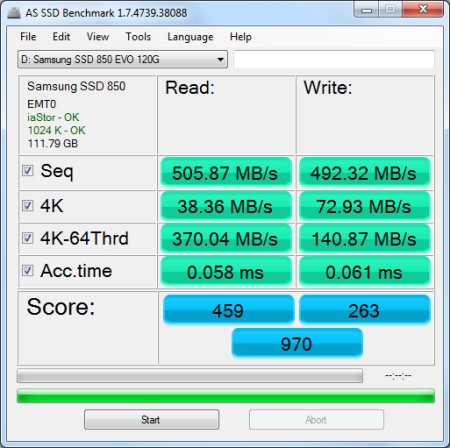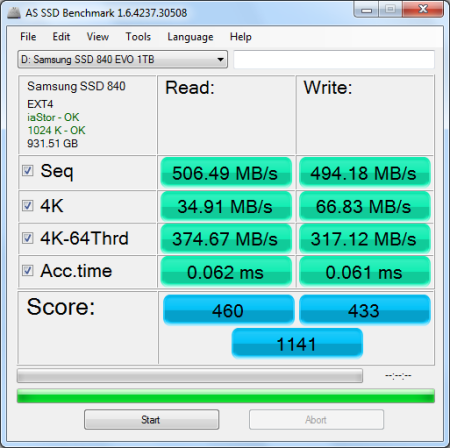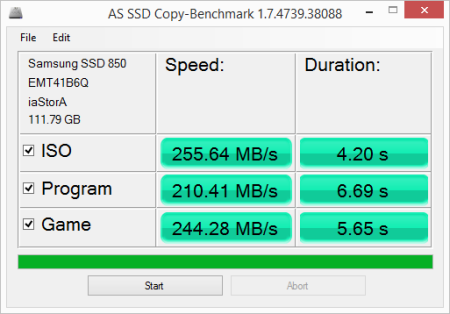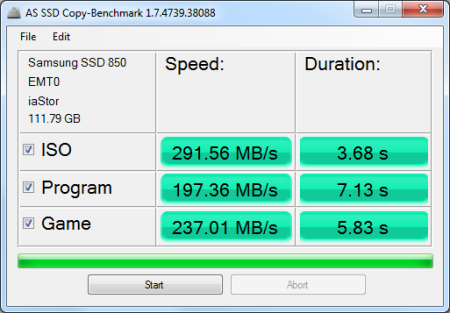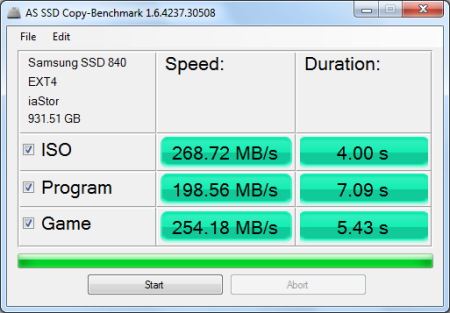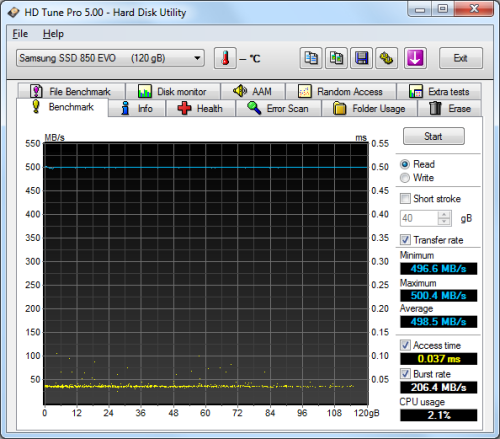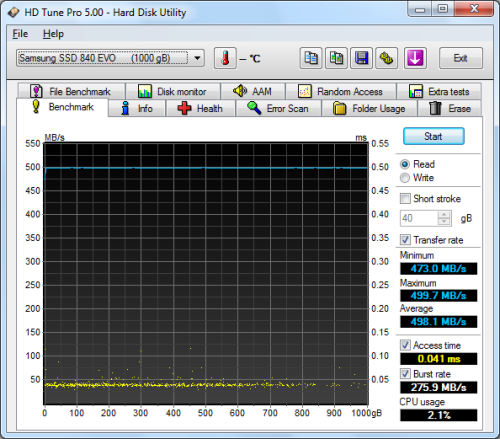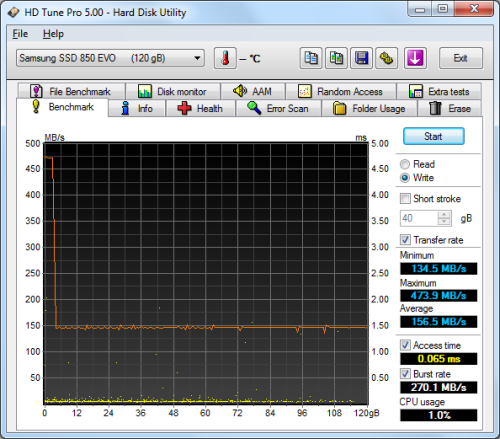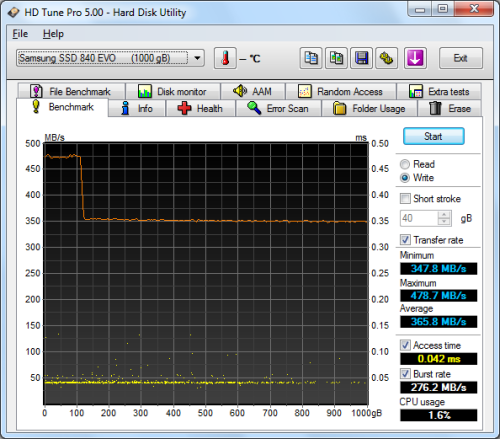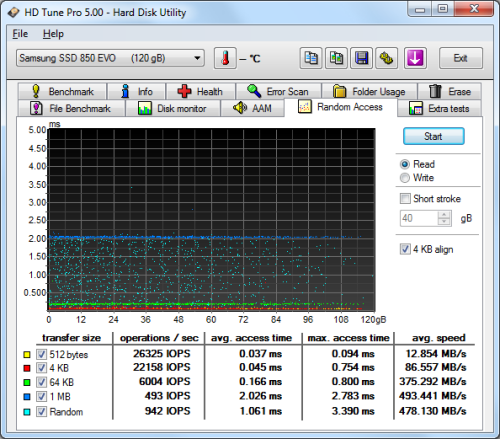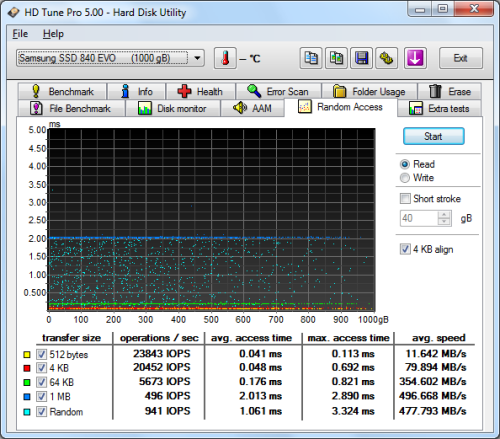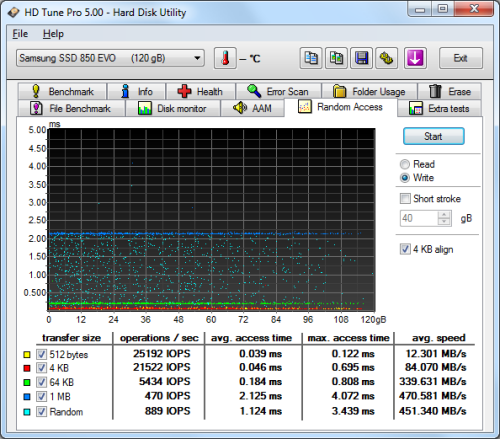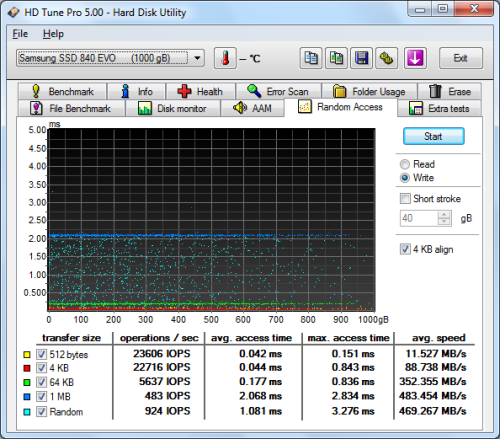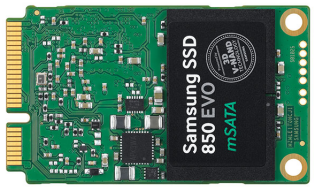

Model: Samsung SSD 850 EVO mSATA 120GB Solid State Drive
Manufacturer: Samsung Electronics
Provided By: Samsung America
Samsung Electronics has been a leader in the electronics industry for more than 30 years. Since the introduction of their first television in 1970, this Korean company has grown to become one of the world's leading electronics manufacturers, offering everything from tiny semiconductors to large home appliances. Samsung is no stranger to the storage industry either. Along with an assortment of DVD and Blu-ray Disc drives, the company offers both hard drive and flash based storage solutions for the portable and desktop computer markets.
Like many other manufacturers, Samsung has set its sights on the growing solid-state drive (SSD) market. Last fall, the company launched its first 3-bit 3D V-NAND based SSD, the 850 EVO. Optimized for everyday computing, the 850 EVO was powered by one of two different controllers. While the 1TB drive was equipped with the same MEX controller found in the 840 EVO and 850 PRO, lower capacity versions got Samsung's new MGX controller. To compensate for the slow write speeds typically associated with 3-bit (TLC) NAND, the 850 EVO used Samsung's TurboWrite write acceleration technology, which created a high-performance write buffer in the SSD. The result is a reasonably priced, consumer-oriented drive that delivers performance much like that of its higher-end sibling, the 850 PRO.
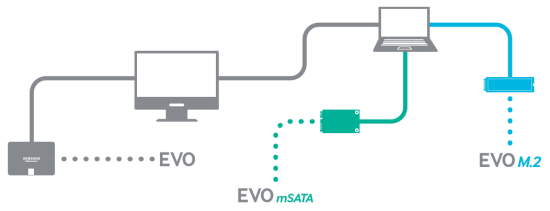
Samsung has now launched the 850 EVO mSATA. Designed for ultra-thin laptop PCs, this new addition to the 850 EVO family sports a compact mSATA form factor which is approximately a quarter the size of a 2.5-inch SSD. The 850 EVO mSATA is powered by the same two controllers found in the 850 EVO and is available with up to 1TB of Samsung's 3-bit 3D V-NAND flash memory. The drive also shares many of the same features as its full size counterpart. Along with Turbo Write, it supports Device Sleep (DEVSLP) for lower power consumption and self-encrypting drive (SED) technology that is TCG Opal 2.0 and IEEE-1667 compliant. Moreover, the 850 EVO mSATA supports Samsung's RAPID (Real-time Accelerated Processing of I/O Data) technology. By using free PC memory as a cache, RAPID can push the performance of the SSD beyond the limits of the current SATA specification.
The 850 EVO mSATA is available in a wide range of capacities from 120GB up to a massive 1TB. For this review, Samsung sent us the 120GB version of the drive which comes equipped with their MGX controller and is capable of delivering up to 540 MB/s sequential read and 520 MB/s sequential write speeds as well as up to 95,000 random read and 88,000 random write IOPS.
| Samsung SSD 850 EVO mSATA 120GB Solid State Drive | |||||||||||||||||||||||||||||||||||||||||||||||||||||
General Specifications
Performance
Reliability
Power Consumption
Environmental
Dimensions and Weight
Other Features
|
Needless to say, this is only a taste of what the 850 EVO mSATA has to offer. To give you an idea of what to expect, we'll take a closer look at Samsung's new mSATA SSD and then see how well it performs. Does the 850 EVO mSATA have what it takes? Can it deliver the performance and features that we've come to expect from Samsung? Keep reading as we find out.
The 850 EVO mSATA comes in a small white box. While there aren't a lot of details on the front, the back of the box shows some of the drive's features including 3D V-NAND technology and a 3 year warranty. Inside, you'll find the SSD as well as a small guide with a warranty statement summary and user manual.

Physical Features:
The 850 EVO mSATA follows the JEDEC MO-300 standard for mSATA SSDs. It measures a mere 50.8 x 29.8 x 3.6 mm and is about one quarter the size of a standard 2.5-inch drive. The 850 EVO mSATA also has a 52-pin mSATA connector which supports data transfer rates up to 6 Gb/s.
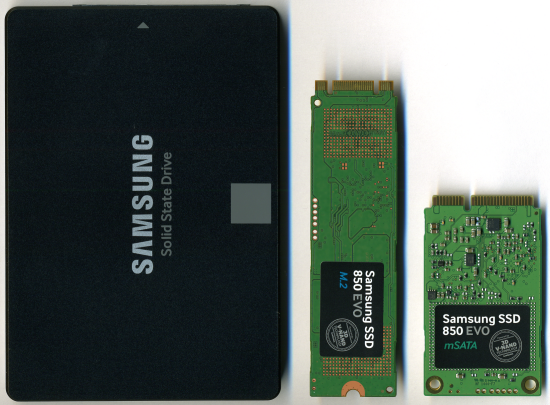
The 120GB version of the 850 EVO mSATA uses Samsung's MGX (S4LN062X01-Y030) controller chip. There still isn't a lot of information available regarding this controller but from what we can gather, it is very similar to the MEX (S4LN045X01-8030) controller found in the 850 PRO and the 1TB version of the 850 EVO. The biggest difference is that instead of three cores, the MGX has only two.


For the 120GB version of the 850 EVO mSATA, Samsung used their own 3-bit, 32-layer 3D V-NAND flash chips. Looking at the pictures above, you can see that there are two 64GB NAND flash packages on the top of the PCB. The drive also has a single 512GB LPDDR3 DRAM memory chip that is used for caching.
The Samsung Magician software is designed to help users easily manage the health and performance of their Samsung SSD. From the main screen, users can check the health of their drives and view information like the serial number, firmware, capacity and the total bytes written. This screen also shows whether or not AHCI mode has been activated as well as the speed of the SATA interface.
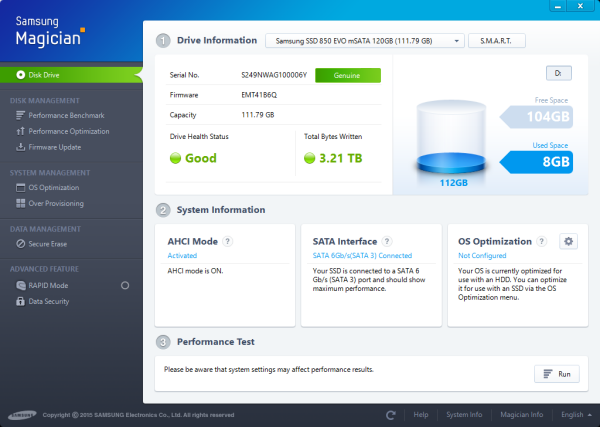
Magician also gives users the ability to benchmark their drives and optimize the performance by forcing TRIM and Garbage Collection to run. In addition to this, users can download and apply firmware updates using the software.
Most operating systems are optimized for traditional hard drives. The OS Optimization menu provides options that help you configure your OS to work best with your SSD. Additionally, the Over Provisioning menu gives you the ability to optimize the performance and lifespan of your drive by resizing the partitions.
The Secure Erase feature provides the option to delete all data on an SSD in a way that it can never be recovered, restoring the drive to its original performance. Magician gives you the option to do this from within Windows. Otherwise, if your SSD is in a frozen state, you can create a bootable USB drive, CD or DVD.
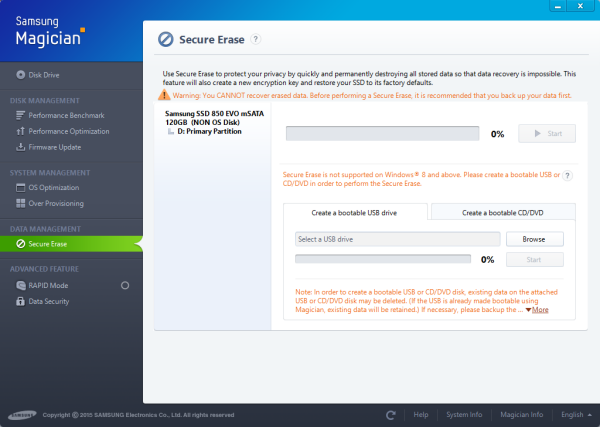
One of the advanced features in Samsung's Magician software is RAPID (Real-time Accelerated Processing of I/O Data) Mode. When enabled, RAPID mode is inserted as a filter driver in the Windows storage stack. The driver actively monitors all storage-related activity between and among the operating system, user applications and the SSD. The RAPID technology analyzes system traffic and leverages spare system resources (DRAM and CPU) to deliver read acceleration through intelligent caching of hot data and write optimization through tight coordination with the SSD.

The other advanced feature deals with Data Security. From here, users can check and see what security features their drive supports and view its current settings. Looking at the screenshot below you can see that like the 840 EVO and 850 PRO, the 850 EVO offers support for Class 0, TCG/Opal and Encrypted Drive.
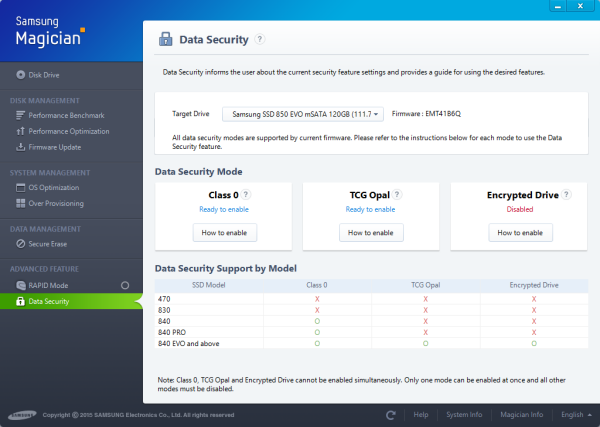
The test system used in this review was an HP 8200 Elite. The computer came equipped with an Intel Core i5-2400 CPU, 4GB of DDR3 1333MHz memory, Seagate Barracuda 7200.12 ST3250312AS 250GB SATA 6 Gb/s hard drive, NVIDIA Quadro FX580 512MB PCIe graphics card and an Intel 82579-LM gigabit network card. For the operating system, I installed a fresh copy of Windows 7 Enterprise. I should also point out that our test system is not equipped with an mSATA port so we had to use an mSATA to SATA 6 Gb/s adapter card.
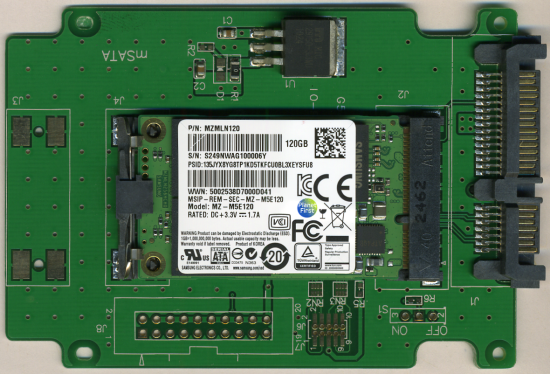
To test the performance of Samsung's 120GB 850 EVO mSATA, I ran a series of benchmarks using CrystalDiskMark 3.0.1, HD Tach RW 3.0.4.0, ATTO Disk Benchmark 2.46, AS SSD, HD Tune Pro 5.00, Anvil's Storage Utilities and Iometer. For comparison, I've also included test results from the Samsung 850 EVO M.2, AMD Radeon R7, Silicon Power Slim S80, Samsung SSD 850 EVO, OCZ ARC 100, SanDisk Ultra II, Crucial MX100, SanDisk Extreme Pro, Samsung SSD 850 PRO, Plextor PX-256M6S, Toshiba Q Series Pro, Plextor PX-256M6M, Samsung SSD 840 EVO mSATA, OCZ Vector 150, OCZ Vertex 450, Silicon Power Slim S55, Samsung SSD 840 EVO, Seagate 600 SSD, SanDisk Extreme II, Plextor PX-256M5M, OCZ Vector, Plextor PX-256M5Pro Xtreme, Samsung SSD 840 Pro and Samsung SSD 840.
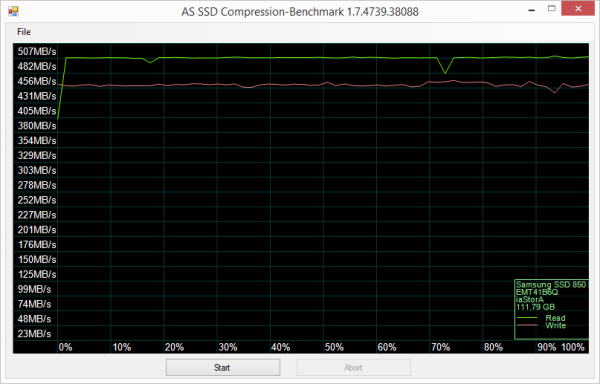
As I mentioned earlier, the 120GB version of the 850 EVO mSATA is based on Samsung's MGX (S4LN062X01-Y030) controller chip. Looking at the screenshot above, you can see that it performs equally well with both incompressible (0%) and compressible (100%) data.
CrystalDiskMark 3.0.1:
First, I ran a few quick tests using CrystalDiskMark. This benchmark tool measures the performance of a storage device by testing its sequential read and write speeds as well as its random read and write speeds using blocks 512K and 4K in size.
According to Samsung, the 120GB 850 EVO mSATA is capable of reading at 540 MB/s and writing at 520 MB/s when connected to a SATA 6 Gb/s port. While the drive performed well, it came up a bit short of these numbers in CrystalDiskMark's sequential read and write speed tests. With RAPID mode enabled, these numbers increased considerably though. Looking at the screenshot above, you can see that the 850 EVO mSATA was able to read at 4,536 MB/s and write at 3,028 MB/s.
HD Tach RW 3.0.4.0:
Next, I used HD Tach to test the 850 EVO mSATA's read, write and burst speeds as well as its seek times and CPU usage.
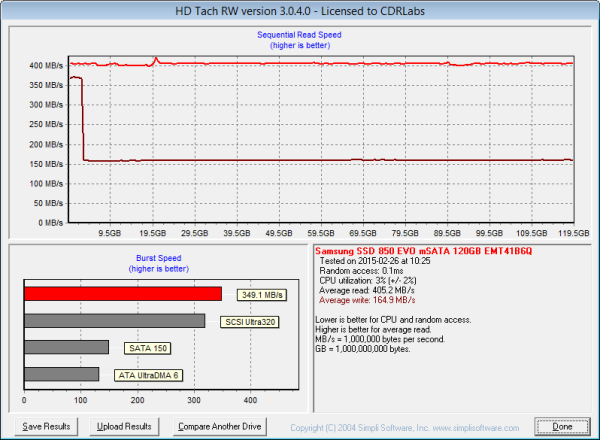
Samsung SSD 850 EVO mSATA 120GB
Looking at the screenshot above, you can see that the 850 EVO mSATA had average read and write speeds of 405.2 MB/s and 164.9 MB/s respectively, as well as a burst speed of 349.1 MB/s. The screenshot also shows the transition from TurboWrite to what Samsung calls "After TurboWrite" speeds. The 850 EVO mSATA starts writing at about 370 MB/s and then drops to about 160 MB/s when the consecutive write operation exceeds the size of the buffer.
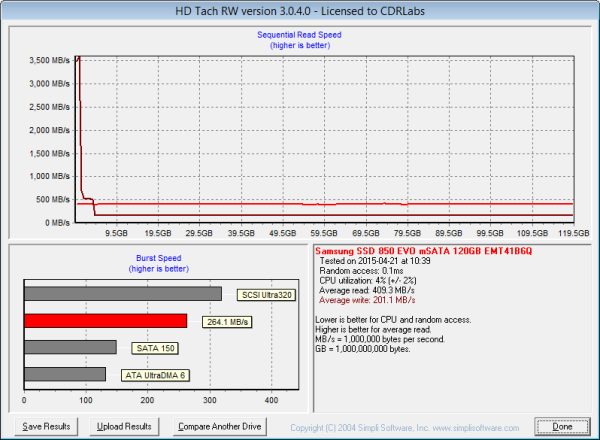
Samsung SSD 850 EVO mSATA 120GB (RAPID Mode)
This time around, RAPID mode had very little effect on the 850 EVO mSATA's performance. Most likely, this is due to the way HD Tach bypasses the file system when performing its read and write tests.
ATTO Disk Benchmark 2.46:
I also used ATTO Disk Benchmark to test the 850 EVO mSATA's sequential read and write speeds. The tests are run using blocks ranging in size from 0.5KB to 8192KB and the total length set to 256MB.
When tested with ATTO, the 850 EVO mSATA's read speeds topped out at about 552 MB/s and its write speeds at 508MB/s. With RAPID mode enabled, the read and write speeds were all over the place, but for the most part, it was a considerable improvement.
AS SSD:
AS SSD is a relatively new benchmark designed specifically for solid state drives. The application contains five synthetic tests used to determine the sequential and random read and write performance of a drive.
AS SSD also includes a copy benchmark. This test copies an ISO (two large files), program (many small files) and game (small and large files), returning the speed and duration of each.
HD Tune Pro 5.00:
Next, I ran a series of tests using HD Tune Pro. This hard disk utility measures a drive's performance by testing its sequential read and write speeds as well as its access time, burst rate and CPU usage. For this review, I'm also going to use it to benchmark the 850 EVO mSATA's random read and write speeds, random access times and the number of operations per second.
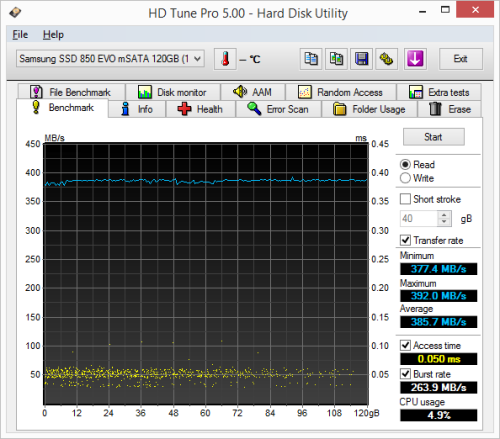 Samsung SSD 850 EVO mSATA 120GB - Read Benchmark |
 Samsung SSD 850 EVO mSATA 120GB (RAPID Mode) - Read Benchmark |
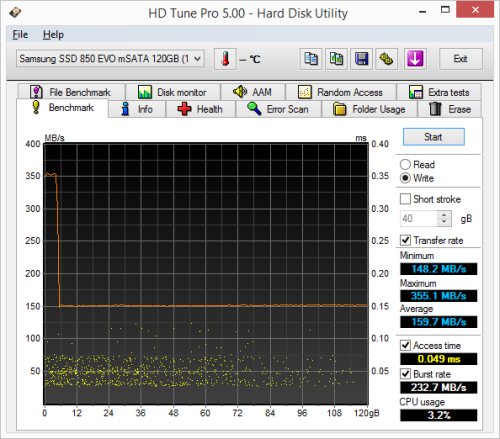 Samsung SSD 850 EVO mSATA 120GB - Write Benchmark |
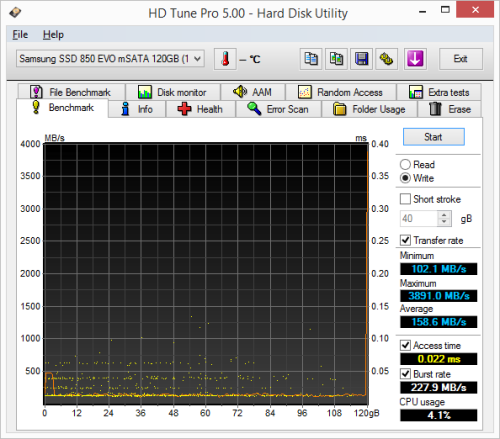 Samsung SSD 850 EVO mSATA 120GB (RAPID Mode) - Write Benchmark |
The 850 EVO mSATA performed relatively well when benchmarked with HD Tune. The drive had average read and write speeds of 385.7 MB/s and 159.7 MB/s, respectively, and a burst rate of 263.9 MB/s when reading.
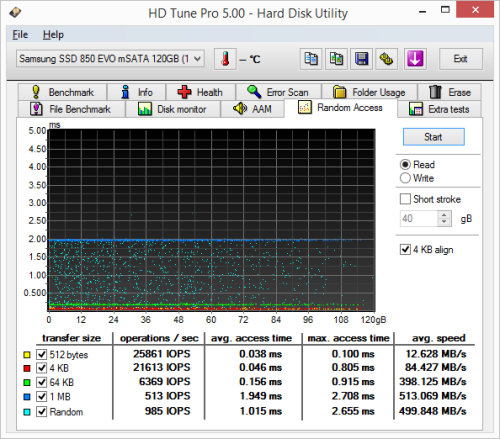 Samsung SSD 850 EVO mSATA 120GB - Random Access Read |
 Samsung SSD 850 EVO mSATA 120GB (RAPID Mode) - Random Access Read |
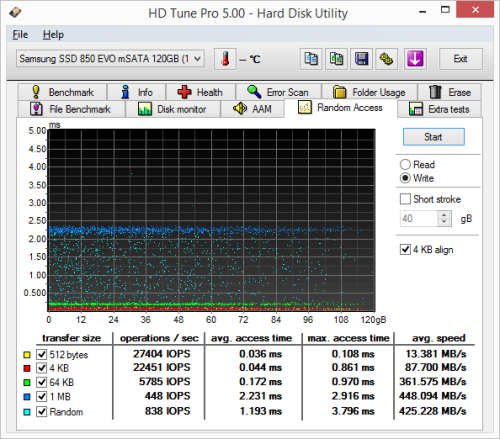 Samsung SSD 850 EVO mSATA 120GB - Random Access Write |
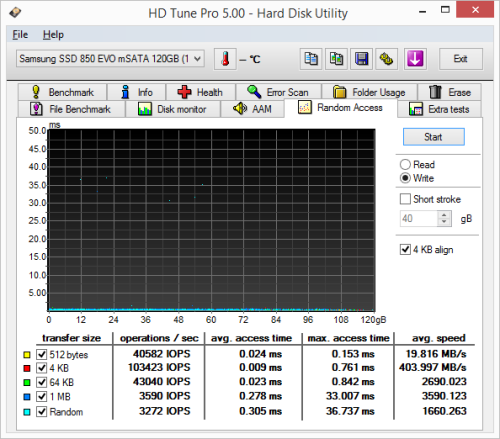 Samsung SSD 850 EVO mSATA 120GB (RAPID Mode) - Random Access Write |
The 850 EVO mSATA didn't disappoint when doing random reads and writes. When reading 4KB blocks, it reached 21,613 IOPS and had an average speed of 84.427 MB/s. The drive was slightly faster when reading, reaching 22,451 IOPS with an average speed of 87.700 MB/s. As you can see, RAPID mode gave the 850 EVO's random read and write performance a considerable boost. With it enabled, the drive reached 137,570 random read IOPS and 103,423 random write IOPS.
Anvil's Storage Utilities:
Anvil's Storage Utilities is another new benchmark designed with SSDs in mind. The standard storage benchmark measures a drive's performance by testing its transfer speeds, access times and IOPS.
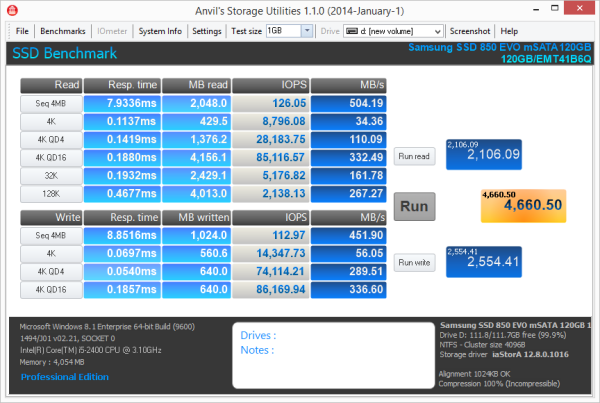
Samsung SSD 850 EVO mSATA 120GB
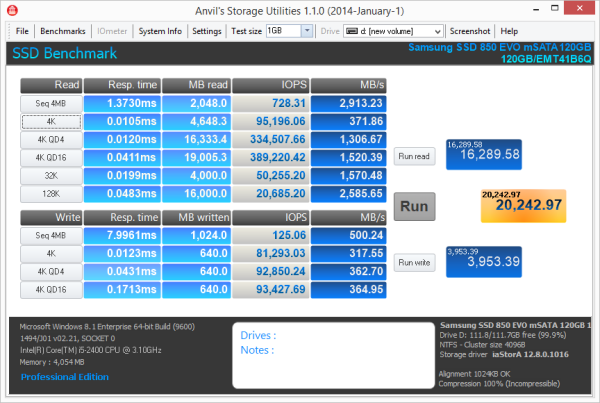
Samsung SSD 850 EVO mSATA 120GB (RAPID Mode)
Iometer:
Lastly, I ran a series of tests using Iometer. This tool can be configured to benchmark a number of things. In this case, I used it to measure the 850 EVO mSATA's read and write speeds and the number of operations per second. The tests were run using random bytes and a queue depth of 3.

The EVO 850 mSATA's performance was hit and miss when tested with Iometer. While the drive was able to read at a respectable 524.59 MB/s, its sequential write speed averaged out at only 172.64 MB/s. With RAPID mode enabled, its read and write speeds jumped to 591.02 MB/s and 311.83 MB/s, respectively.

The 850 EVO mSATA's random read and write performance was a mixed bag as well. While the drive was able to read at an impressive 159.26 MB/s, its random write speed averaged out at only 166.48 MB/s.
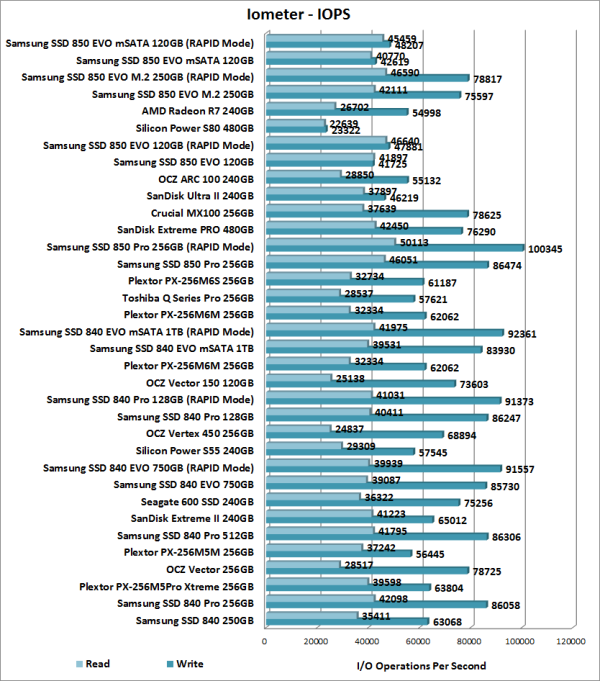
According to Samsung, the 120GB 850 EVO mSATA is capable of 95,000 IOPS when reading and 88,000 IOPS when writing 4K blocks. In our tests, the drive reached 40,770 random read IOPS and 42,619 random write IOPS. Increasing the queue depth had little impact on the 850 EVO mSATA's random write performance. However, with the queue depth set to 32, the drive was able to reach 94,593 random read IOPS.
TRIM Performance:
While SSDs offer many benefits, there are some downsides to using flash memory. One of the biggest issues people run into is performance degradation. Over time, an SSD will run out of fresh blocks and will have to write over data the file system has marked as deleted. This procedure is very complicated and can slow an SSD's write speeds considerably.
To address this problem, most manufacturers have added TRIM support to their SSDs. The TRIM command allows an operating system, such as Windows 7, to tell an SSD which data blocks are no longer in use. Using this information, the drive pro-actively erases these blocks and adds them to the free block pool.

To test the 850 EVO mSATA's TRIM and garbage collection functions, I first put the drive in a "dirty" state. I used Iometer to fill the entire drive and then ran a random write test for 30 minutes. This had little impact on the 850 EVO mSATA's read speed. However, its average writing speed dropped to a mere 18.4 MB/s.
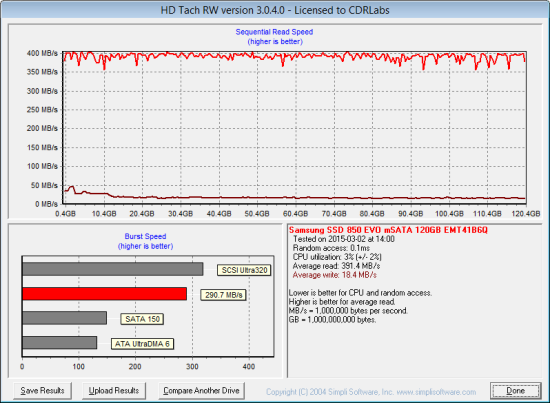
Samsung SSD 850 EVO mSATA - Dirty
To see how well the 850 EVO mSATA could recover, I let the computer sit for about 45 minutes and then reran the test. Looking at the screenshot below, you can see that the drive's average writing speed jumped up to 225.7 MB/s.
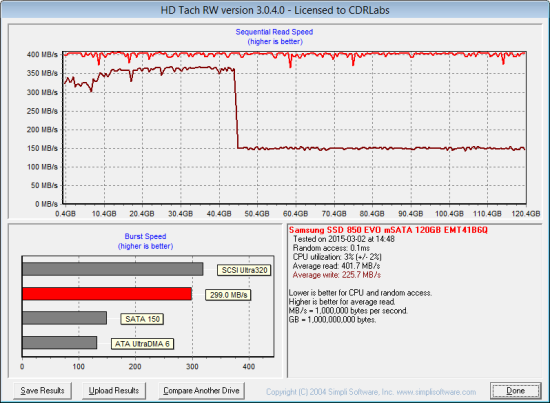
Samsung SSD 850 EVO mSATA - After Trim
Lastly, I used Samsung's SSD Magician software to perform a secure erase of the 850 EVO mSATA. With the drive wiped clean, it had average read and write speeds of 406.4 MB/s and 226.0 MB/s, respectively.
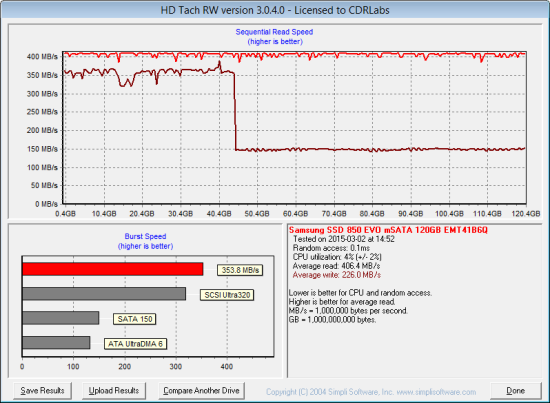
Samsung SSD 850 EVO mSATA - Secure Erase
Final Thoughts:
The mSATA version of the Samsung's popular 850 EVO SSD is finally here and, like the original, it delivers a lot of bang for your buck. Designed and built entirely in-house, the 850 EVO mSATA is based on Samsung's MEX/MGX controller and is available with up to 1TB of the company's 3-bit 3D V-NAND flash. The drive is also equipped with Samsung's innovative TurboWrite technology which uses a high speed buffer to maximize a user's everyday computing experience. Like its full size counterpart, the 850 EVO mSATA performed relatively well throughout most of our tests. In our sequential read and write tests, the 120GB version of the drive was able to read at speeds as high as 552 MB/s and write at speeds in excess of 476 MB/s. It also had no problems holding its own when doing random reads, but lagged behind other drives in our random write tests, producing a little more than 42,000 IOPS at low queue depths.
Samsung's TurboWrite technology does have its limitations. It does a great job of maximizing performance under normal workloads, but, once a consecutive write operation exceeds the size of TurboWrite's buffer, the 850 EVO mSATA's write speed drops to non-accelerated levels. If you use your computer primarily for web browsing, email or to play the occasional game, it's unlikely that you will ever run into this situation. However, if you have a heavier workload and are doing something like video editing, which writes large amounts of data, you may want to consider other options.
Of course, fast read and write speeds aren't the only things the 850 EVO mSATA has to offer. Along with support for technologies like RAPID and TurboWrite, the drive features AES 256-bit full disk encryption and is compatible with both the TCG Opal and IEEE 1667 specifications. The 850 EVO mSATA also supports the SATA Device Sleep (DEVSLP) standard which extends the battery life of a device by reducing the drive's power consumption when it's not in use.
The Samsung 850 EVO mSATA is available now in 120GB, 250GB, 500GB and 1TB capacities. Prices on Amazon.com start at $80 for the 120GB version and go up to $450 for the top of the line 1TB drive.

Highs:
- Small mSATA form factor
- Equipped with 3-bit 3D V-NAND
- Available in 120GB, 250GB, 500GB and 1TB capacities
- Features RAPID mode and TurboWrite technology
- Excellent sequential read and write speeds under most conditions
- Good random read and write performance
- Performs equally well with compressible and incompressible data
- SATA 6Gb/s interface
- Large SDRAM cache
- Supports TRIM, garbage collection and wear leveling
- AES 256-bit full disk encryption
- TCG Opal and IEEE 1667 compliant
- Works with SSD Magician software
- Reasonably priced
- 3 year warranty
Lows:
- Write speed drops when TurboWrite buffer is full
- RAPID mode is Windows only
